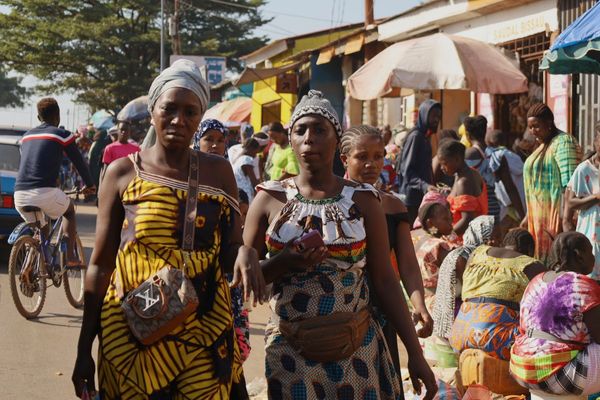One of Western Australia's most threatened native birds has had its best breeding season on record thanks to the development of "perfect" artificial nests, according to conservationists.
Decades of land clearing across the state's south-west had put the Carnaby's black cockatoo at grave risk of becoming extinct, with their traditional breeding ground wiped out.
But researchers have discovered durable plastic breeding hollows placed high up in trees across the region had encouraged breeding, and they have the data to prove it.
Rick Dawson has studied Carnaby's at the Coomallo Creek nature reserve, 200 kilometres north of Perth, for two decades.
There were 41 breeding attempts reported at the open-air research site in 2009 — but in the past year, a record 138 nests were observed.
Mr Dawson said the restoration of almost 100 decaying natural hollows at Coomallo, and the recent addition of 79 new artificial nests, was the catalyst for success.
"They're their own worst enemy. When we have wooden hollows, they eventually chew the sides out, chew the inside," he said.
"The aim of these [artificial nests] is to make them last two lifetimes of Carnaby's, which is about 70 to 75 years."
"A tree has to be 150 years old minimum to produce a hollow [naturally] … so artificial hollows is really a short term gap until we maybe can keep planting trees."
'Business class' comfort for breeding birds
Shenton Park College student Eva Czislowski spent the past year leading a school project producing the plastic hollows, dubbed "cockatubes".
The 16-year-old and her classmates have made 40 artificial nests to be distributed across the region.
"They're very roomy, and they're very appealing to the bird's eye.
"The goal is to breed a future generation … it's kind of allowing them a backup plan.
"If we have fledglings, that means that we're supporting the future … and so nature will just then do its thing.
"We're just maximizing their chance to survive and live on and breed."
Tubes a 'short term' solution
The estimated population of Carnaby's varies between 10,000 and 60,000 across a huge area from Geraldton to Ravensthorpe.
"We found a population that hadn't been surveyed before not far out of Kalbarri out in the Murchison," Mr Dawson said.
Despite their status as a threatened species, Mr Dawson described them as resilient birds.
"If we can't save Carnaby's, we can't save anything, I believe," he said.
"They've tried many, many different unique food sources. They used to eat banksia on the Swan coastal plain, and then we took banksia out and put in pine trees and then they adapted to them straight away.
"They're willing to have a go."
In the past year, Mr Dawson photographed the oldest Carnaby's recorded, marked with a leg band attached 35 years ago.
"And funnily enough, guess what he was nesting in? An artificial hollow," he said.
While Mr Dawson said that was a testament to their ability to survive, helping them to breed was a nuanced mission.
"The stats are quite clear from the Perth Zoo, that the amount of injured black cockatoos they get in every year is staggering," he said.
"We do not want [artificial nests] in suburbia. Downtown Subiaco would not be cool.
"We know for a fact that if you don't put them in a known breeding area, or somewhere where there's sufficient food, sufficient water … you can put a hollow up and might make you feel good, but it's not going to achieve anything.
Dean Arthurull, who also makes artificial hollows and has ten installed at his property in Bindoon, said they were a quick fix to a larger problem.
"There's an enormous amount more work to be done," he said.
"We can put artificial tubes up in trees and we can do it relatively quickly.
"But unless we provide enough natural habitat and foraging habitat for them to breed in every year, then it's just a stepping stone that doesn't have a bigger stone after it. You're just going to land in the water."







